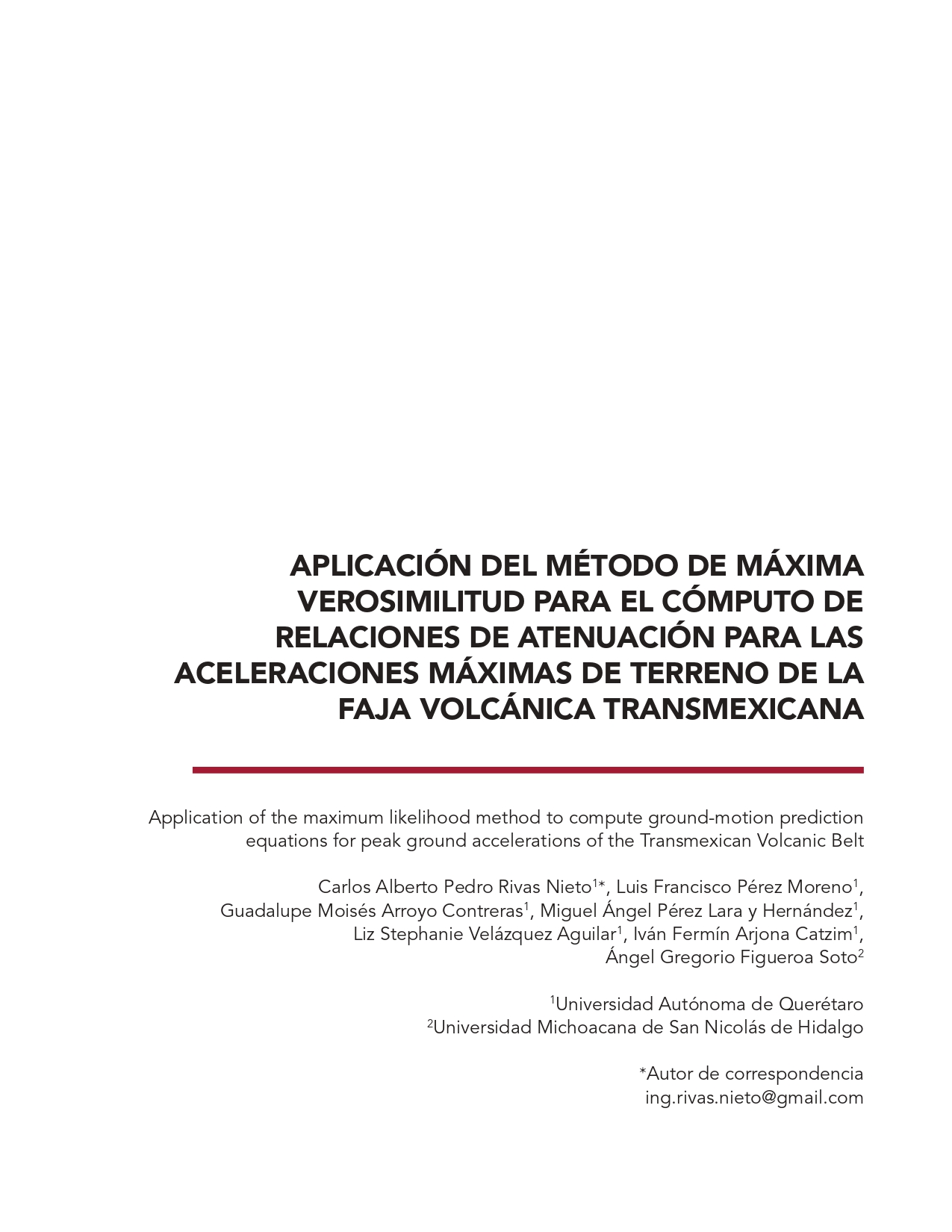Abstract
Investigations on the seismic attenuation of the Transmexican Volcanic Belt have increased in the past ten years due to the peculiarity of the zone and the growth of the information and data used for the seismic risk analyses. In the present article a ground-motion prediction equation for the peak ground accelerations of the Eastern sector of this seismogenic zone has been determined, considering records that belong to shallow crustal seismic events with depths ranging from 1 to 20 km and magnitudes between 2.7 and 4.6, as reported by the Mexican National Seismological Service; all the data was recorded by stations located within the zone that belong to the Broadband Seismological Network of the same organization. The attenuation was modeled using a random effects function, in which the magnitude, the epicentral distance, an earthquake-to-earthquake variability and a site-to-site variability were taken into account; moreover, a one-stage maximum likelihood method was applied to obtain the solution for such ground motion prediction equation. The results were tested against the original data to assess the goodness of fit between both. For this purpose an analysis of paired data was carried out, which returned a high compatibility of both for distances from the 50 to 200 km. An assembly of ground-motion prediction equations for spectral response accelerations is expected to be computed from this same database in forthcoming investigations.
This work is licensed under a Creative Commons Attribution-NonCommercial 4.0 International License.

